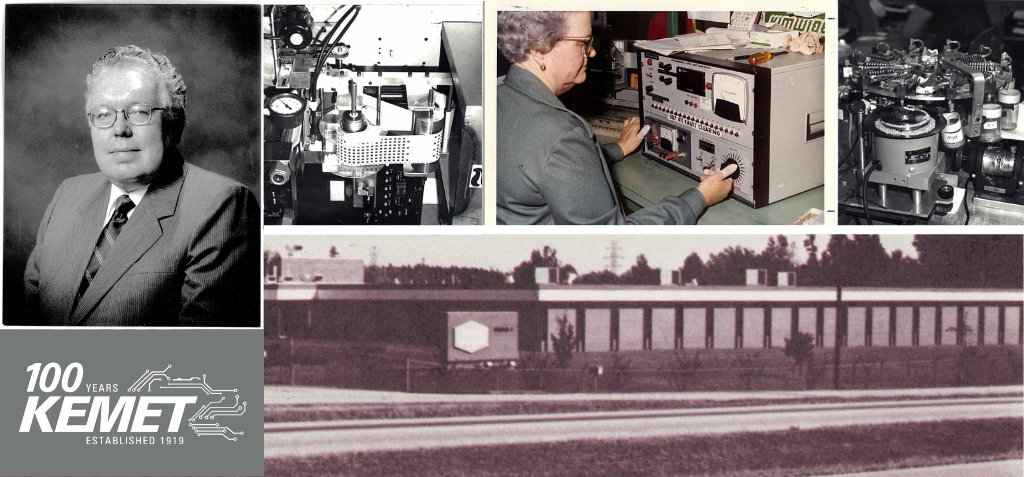A whirlwind of fantastic innovations and an explosion of new technologies transformed the world in the 1960s, ‘70s, and ‘80s. Satellite communication, microwave ovens, and video arcade games were bringing technology to the masses. Computers were shrinking in size, but amping up in other ways – becoming more fun, intelligent and “user friendly.” The era brought us the Apple II, the VIC-20, and the first Nintendo Entertainment System. As the world changed, so did KEMET.
Fresh into the capacitor business, in the early 1960s, KEMET was enjoying a boom time borne of consumer enthusiasm about the applications of KEMET products in space programs and automobiles. During this time, one of the most influential KEMET leaders, David E. Maguire, would commence his rise. Part of a new generation of KEMET, Maguire was recruited out of college at Massachusetts Institute of Technology (MIT) and the University of Michigan. After moving through positions in Fremont and Cleveland, Ohio, Maguire was transferred to the newly built Simpsonville, South Carolina plant in the late 1960s. Known for his innovative mind, Maguire was charged with developing a line of ceramic capacitors. To accomplish this, Maguire decided to take KEMET international. In 1969, KEMET’s facility in Matamoros, Mexico was established to manufacture Multi-Layer Ceramic Capacitors (MLCCs), and KEMET’s first line of MLCCs hit the market in 1969. To this day, Matamoros is a stronghold of KEMET manufacturing.
Yet 1970 brought a great change to KEMET. The market for tantalum capacitors took a severe dip, and KEMET had to make the hard decision to consolidate its operations, closing the Cleveland location. Following Maguire’s transfer in 1966, 275 employees and their families moved to Simpsonville. This critical mass of transfers formed the core of a deep, familial culture that became a hallmark of KEMET Simpsonville.
The dawn of the computing age of the late 1970s led to yet another boom time for KEMET. With the invention of the surface-mount tantalum chip capacitor in 1976, the company saw an opportunity to capitalize on the increase in demand. This led to the design and manufacture of the best components in the industry. KEMET expanded its operations around the Simpsonville area, and to North Carolina. By the early 1980s, KEMET was expanding product offerings, operations, global reach, and enjoying success.
Yet a chemical disaster halfway across the world led to what would eventually become a complete restructure in KEMET’s business model. In the mid-1980s, a chemical explosion at KEMET’s parent company, Union Carbide, caused lasting and irreparable damage. Thousands of people perished, and Union Carbide began to fall apart. After a hostile takeover attempt, Union Carbide decided to sell off its electronic components division, KEMET. In an ace move, fourteen of KEMET’s senior managers, dubbed the “Fab 14,” organized a leverage buyout of the company, and David Maguire became KEMET’s first CEO.
By the end of the 1980s KEMET had new leadership, a vital mix of products, and the hope that market would continue to grow. The company was poised to enter the 1990s and beyond with the strength and the commitment to make the world a better, safer, more connected place to live.
